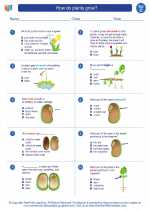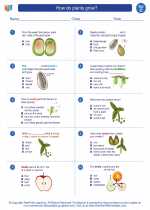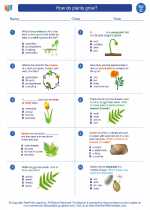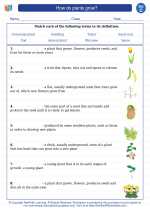How do plants grow? -> forests
Forests
A forest is a large area covered chiefly with trees and undergrowth. Forests play a crucial role in maintaining the ecological balance of the Earth. They provide habitat for a variety of plants and animals, regulate the climate, and offer a range of ecosystem services that are vital for human well-being.
Types of Forests
Forests can be broadly categorized into several types:
- Tropical Rainforests: These forests are characterized by high rainfall and dense vegetation. They are found near the equator in regions such as the Amazon Basin and the Congo Basin.
- Temperate Forests: These forests have distinct seasons and are found in regions with moderate climate, such as parts of North America, Europe, and Asia.
- Boreal Forests: Also known as taiga, these forests are found in the northern hemisphere and are characterized by cold temperatures and coniferous trees.
- Deciduous Forests: These forests are dominated by trees that shed their leaves seasonally and are found in temperate regions.
Importance of Forests
Forests are important for various reasons:
- Biodiversity: Forests are home to a wide variety of plant and animal species, many of which are not found anywhere else.
- Climate Regulation: Trees absorb carbon dioxide and release oxygen through the process of photosynthesis, helping to regulate the Earth's climate.
- Water Cycle: Forests play a crucial role in the water cycle by absorbing and releasing water through transpiration, which helps in maintaining water resources.
- Soil Conservation: The roots of trees help to hold the soil together, preventing erosion and maintaining soil fertility.
- Recreation and Tourism: Forests provide opportunities for outdoor recreation and tourism, benefiting local economies.
Threats to Forests
Forests are facing numerous threats, including:
- Deforestation: The clearing of forests for agriculture, logging, and urban development is a major threat to forest ecosystems.
- Climate Change: Changes in temperature and precipitation patterns can have profound impacts on forest health and distribution.
- Wildfires: Uncontrolled wildfires can cause widespread damage to forest ecosystems.
- Illegal Logging: The illegal harvesting of timber contributes to deforestation and loss of biodiversity.
Study Guide
To study the topic of forests, consider the following key points:
- Identify and describe the different types of forests found around the world.
- Explain the importance of forests in maintaining ecological balance and supporting biodiversity.
- Discuss the various ecosystem services provided by forests, such as climate regulation and soil conservation.
- Analyze the threats facing forests and their potential impacts on the environment and human society.
- Consider the ways in which individuals and communities can contribute to the conservation and sustainable management of forests.
By understanding the significance of forests and the challenges they face, we can work towards preserving these valuable ecosystems for future generations.
.◂Science Worksheets and Study Guides Third Grade. How do plants grow?
Study Guide How do plants grow?
How do plants grow?  Activity Lesson
Activity Lesson How Do Plants Grow?
How Do Plants Grow?  Worksheet/Answer key
Worksheet/Answer key How do plants grow?
How do plants grow?  Worksheet/Answer key
Worksheet/Answer key How do plants grow?
How do plants grow?  Worksheet/Answer key
Worksheet/Answer key How do plants grow?
How do plants grow?  Worksheet/Answer key
Worksheet/Answer key How do plants grow?
How do plants grow?  Vocabulary/Answer key
Vocabulary/Answer key How do plants grow?
How do plants grow?  Vocabulary/Answer key
Vocabulary/Answer key How do plants grow?
How do plants grow? 

 Activity Lesson
Activity Lesson
 Worksheet/Answer key
Worksheet/Answer key
 Worksheet/Answer key
Worksheet/Answer key
 Worksheet/Answer key
Worksheet/Answer key
 Worksheet/Answer key
Worksheet/Answer key
 Vocabulary/Answer key
Vocabulary/Answer key
 Vocabulary/Answer key
Vocabulary/Answer key

The resources above cover the following skills:
LIFE SCIENCE (NGSS)
From Molecules to Organisms: Structures and Processes
Students who demonstrate understanding can:
Develop models to describe that organisms have unique and diverse life cycles but all have in common birth, growth, reproduction, and death.